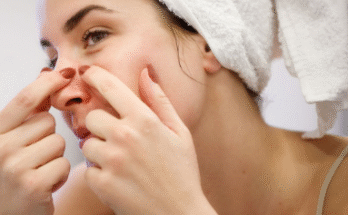Acne is one of the most common skin concerns, affecting teens and adults alike. While there are countless treatments available—from over-the-counter creams to prescription medications—many people turn to facials hoping for a clear, radiant complexion. But can facials truly cure acne, or are they just a temporary fix? Let’s explore this topic with a friendly, evidence-based approach.
Facials are professional skin treatments that involve cleansing, exfoliating, and sometimes extractions or masks designed to improve the health and appearance of your skin. They can feel luxurious, relaxing, and rejuvenating, which is part of their appeal. For those struggling with acne, the allure is obvious: a skilled esthetician might help reduce breakouts and leave your skin looking smoother.
It’s important to understand what facials can and cannot do. Facials can be very effective in managing acne symptoms. Regular exfoliation during a facial helps remove dead skin cells that can clog pores, while professional extractions can safely clear blackheads and whiteheads without causing the inflammation that often comes from picking at skin at home. Some facials also incorporate treatments like chemical peels or light therapy, which can target acne-causing bacteria and reduce inflammation. For many people, these treatments can lead to noticeable improvements in skin texture and clarity over time.
However, it’s unrealistic to expect a facial alone to completely cure acne. Acne is often caused by a combination of factors including hormones, genetics, diet, and lifestyle. While facials help manage surface-level symptoms, they do not address internal factors like hormonal imbalances or excess oil production. This means that without a comprehensive skincare routine or medical treatment, breakouts may return even after a facial.
Consistency is key when it comes to any skincare regimen. While a single facial might temporarily brighten your skin and reduce redness, ongoing care—both at home and professionally—is necessary to see lasting results. Gentle cleansing, non-comedogenic moisturizers, and sun protection are all essential components of acne management. In some cases, dermatologists may recommend combining facials with topical treatments or medications to target stubborn acne more effectively.
Another factor to consider is the type of facial you choose. Not all facials are created equal, and some may even irritate sensitive or acne-prone skin if not tailored appropriately. It’s essential to consult with a licensed esthetician or dermatologist who understands your skin type and concerns. They can customize the treatment, recommend safe products, and avoid aggressive procedures that might worsen inflammation or cause scarring.
Facials also offer more than just acne control—they promote overall skin health and relaxation. The massage elements of facials improve blood circulation, which supports cell renewal, and professional treatments often include high-quality products that nourish and hydrate the skin. Even if acne is not fully cured, regular facials can help maintain a clearer, healthier complexion while reducing the stress and anxiety often associated with breakouts.
In conclusion, facials can be a helpful tool in managing acne, especially when combined with a consistent skincare routine and guidance from professionals. They are not a miracle cure, but they can significantly improve skin appearance, provide relief from clogged pores, and enhance overall skin health. For anyone struggling with acne, viewing facials as part of a holistic approach—rather than a one-time solution—is the best way to achieve long-term results and enjoy the confidence of healthier, clearer skin.


